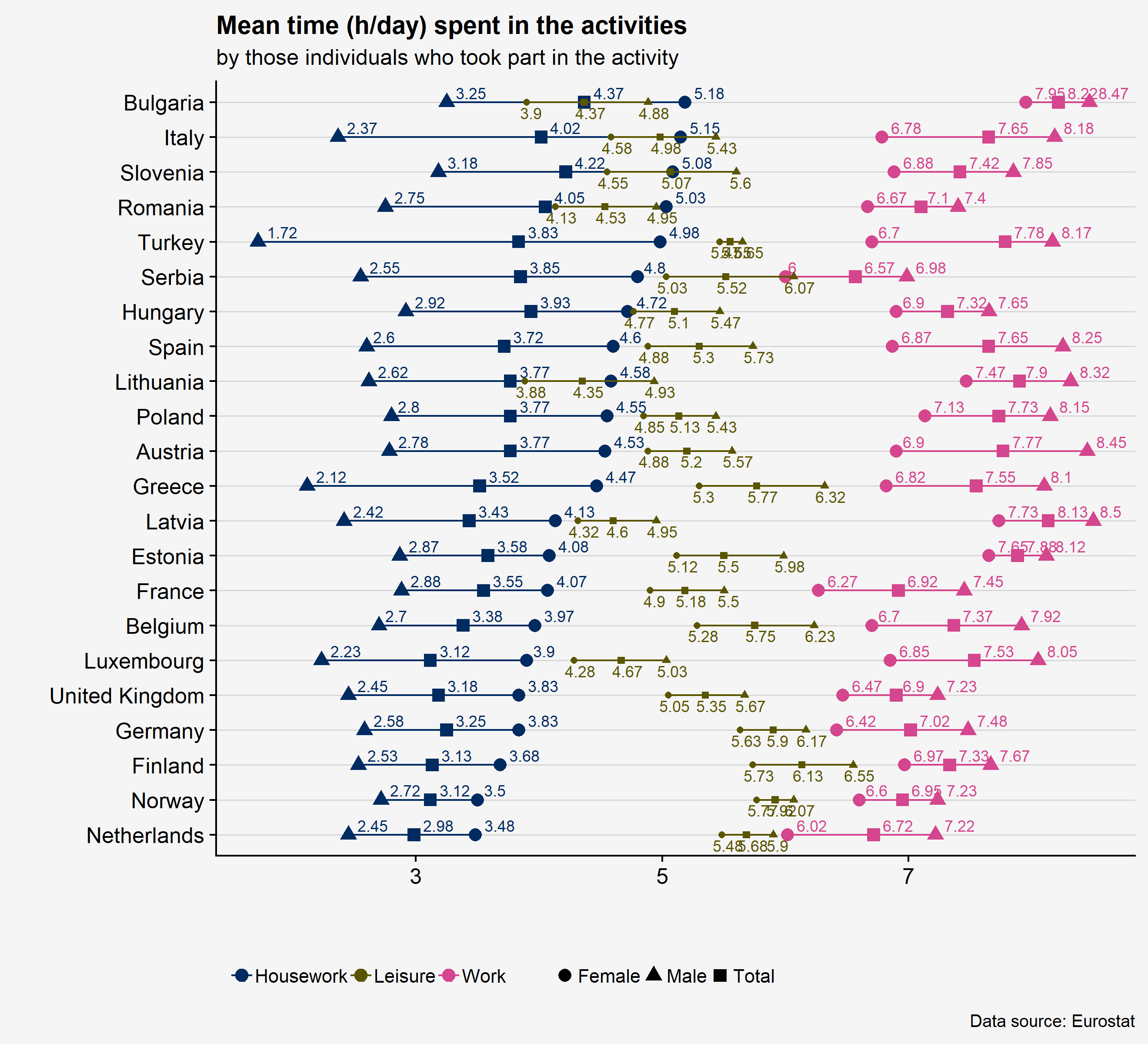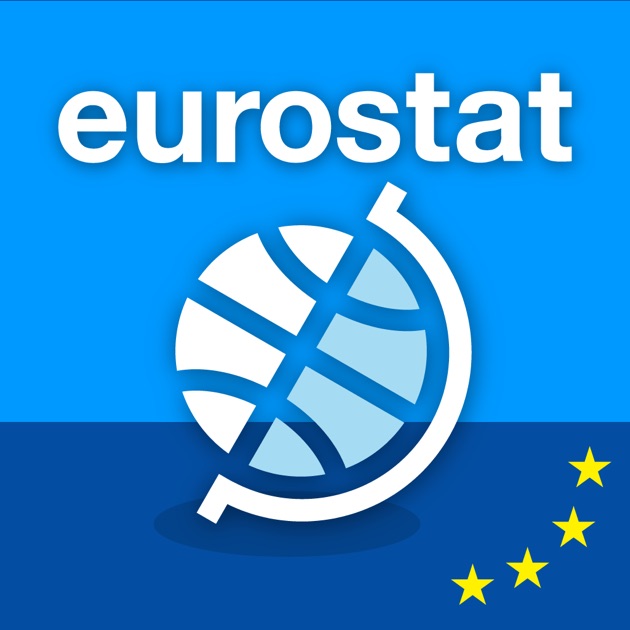Domestic work so often unseen and underestimated might be valued “at 13 per cent of Global GDP” (UNWomen). For some countries the estimates go up to 60% (UK, CH). Most of the domestic work is still done by women in exchange for “lower” working hours in official job. As a result, usually women end up working more in total and thus having a less time for leisure. To look at this problem I have decided to analyse Eurostat data from time-use surveys.
Continue reading




